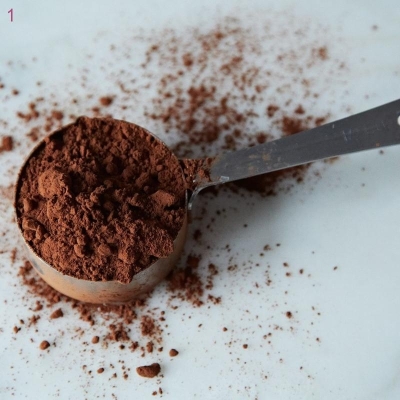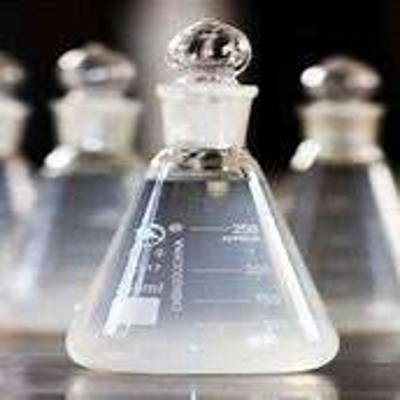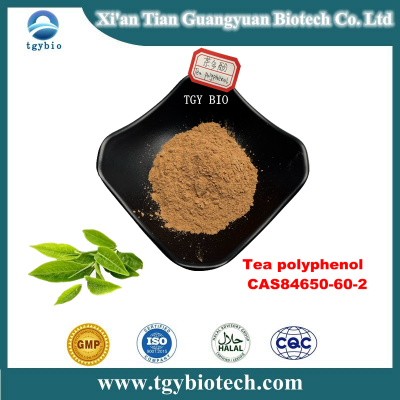Classification of natural colorants
-
Last Update: 2017-05-11
-
Source: Internet
-
Author: User
Search more information of high quality chemicals, good prices and reliable suppliers, visit
www.echemi.com
Introduction: many natural colorants are used in food products, and there are many kinds of natural colorants Here is an introduction to the classification of natural colorants In China, many natural products have a long history and are always loved by people At present, the development and application of natural food additives is becoming an international trend The development of these traditional products will enable domestic enterprises to occupy a unique leading position in the global market The following is an introduction to the classification of natural colorants Hongqu is a traditional fermented product in China, which has a history of more than 1000 years It is mainly produced in Fujian, Zhejiang, Guangdong and other southern provinces Red koji is generally used for making wine, which has fitness effect At present, there are Fujian red koji wine, Taiwan Jianglu wine, etc.; it can also be used for food coloring, such as making red bean curd, etc.; in recent years, food manufacturers have applied it to the coloring of ham sausage to reduce the use of nitrite in meat products, because excessive consumption of nitrite can cause cancer In addition, scientists found that Monacolin K, which can inhibit cholesterol production, is an important substance in regulating blood lipid, so it has attracted great attention from relevant parties The I clinical trial conducted by the Chinese Academy of traditional Chinese medicine confirmed that Monascus has the effect of reducing blood fat, glucose and blood pressure At present, many of the lipid-lowering drugs sold in the domestic market are Monascus preparations It is understood that through the research and development of relevant units, China has been able to produce Monascus containing more than 0.4% of lovastatin, some of which have reached more than 0.8%, known as functional Monascus It is reported that the United States has started to import functional Monascus from China as a food supplement to the market, while European countries have imported Monascus from China as a food ingredient for ham sausage production It is understood that at present, the annual export volume of Monascus in China has reached about 4000 T, and there are more than 10 production enterprises with a total output of about 5000 t, most of which adopt traditional solid-state fermentation Perilla extract is a traditional Chinese medicinal plant The pigment of Perilla is anthocyanin, the content is 2% - 3%, the main components are perilla and zisuning Perilla has a special fragrance, the main component is Perillaldehyde Perilla has the functions of detoxifying, dispersing cold and stomach The pigment extracted from fresh perilla leaves has good heat and light resistance, and also has good stability when the pH value is lower than 4, so it is suitable to be used as a colorant for acid drink and food A large number of Perilla are planted in Jiaodong Peninsula, Shandong Province, China Perilla leaves are mainly exported to Japan, which is an important seasoning ingredient in Japanese dishes There are health drinks in the Japanese market, perilla water According to statistics, in Japan alone, the consumption of liquid perilla pigment with a color price of 60 has reached 10 tons, so the development of Perilla pigment is promising Grape red grape red is the extract of grape skin, and its main components include malvacaine, paeoniflorin, Delphine, anthocyanin, etc According to China's health standard, the maximum dosage is 1g / kg, which can be used to make wine, drink, ice stick, etc As everyone knows, people in the Mediterranean coastal countries have the habit of drinking red wine, and the incidence rate of coronary heart disease is lower than that of other countries According to Marcus, one of the main sources of anthocyanins and polyphenols in food is red wine The company's proprietary technology is to separate grape skin from the residue after pressing grape juice, and extract red grape extract with water, which contains high anthocyanins and polyphenols According to reports, SEPPIC company of France once exhibited the grape antioxidant named provinols at the healthy food ingredients exhibition in Frankfurt, Germany in 2000 The advertisement shows a purple red powder pattern poured from a red wine bottle, indicating that the antioxidant extracted from red wine contains not less than 95% red wine polyphenols, does not contain alcohol and any solvents and carriers, is a water-soluble substance, suitable for health food and dietary supplements In recent years, it has been found that red wine contains one kind of resveratrol, which has antibacterial activity, can prevent the oxidation of LDL and inhibit platelet aggregation It is mainly distributed in grape skin In a word, the antioxidants contained in grape mainly exist in grape skin, which is a waste in the production of wine and grape juice In general, the grape skin accounts for 45% of the crushed dregs There are abundant grape resources in our country The annual output of grape is about 300000 tons People in our country also prefer to drink red wine, so the development potential of extracting grape red antioxidant from grape skin is huge Lutein Lutein is widely found in spinach, cabbage, peach, mango and papaya Lutein and zeaxanthin are both carotene lines, which can also be detected in human plasma It has antioxidant effect in disease prevention It is understood that lutein has eight isomers, which are difficult to synthesize artificially, so it can only be extracted from plants According to nutraceuticals, lutein is now mostly extracted from marigold, which contains 20 times more lutein than spinach Lutein contained in marigold petals is mainly in the form of lutein esters, which can be metabolized into lutein in human body Research shows that lutein can reduce the formation of degenerative senile plaques and protect the health of eyes Kemin company in the United States to meet the market demand for lutein Some colorants are used in industry, but some of them are used in food What's the harm of excessive colorants? In fact, a small amount of colorants do not harm people, but excessive use will cause serious harm However, China's food safety detector can accurately check the safety level of food, so consumers can eat it at ease More food safety knowledge is in Baibai safety net Editor in charge: he xianrob
This article is an English version of an article which is originally in the Chinese language on echemi.com and is provided for information purposes only.
This website makes no representation or warranty of any kind, either expressed or implied, as to the accuracy, completeness ownership or reliability of
the article or any translations thereof. If you have any concerns or complaints relating to the article, please send an email, providing a detailed
description of the concern or complaint, to
service@echemi.com. A staff member will contact you within 5 working days. Once verified, infringing content
will be removed immediately.







